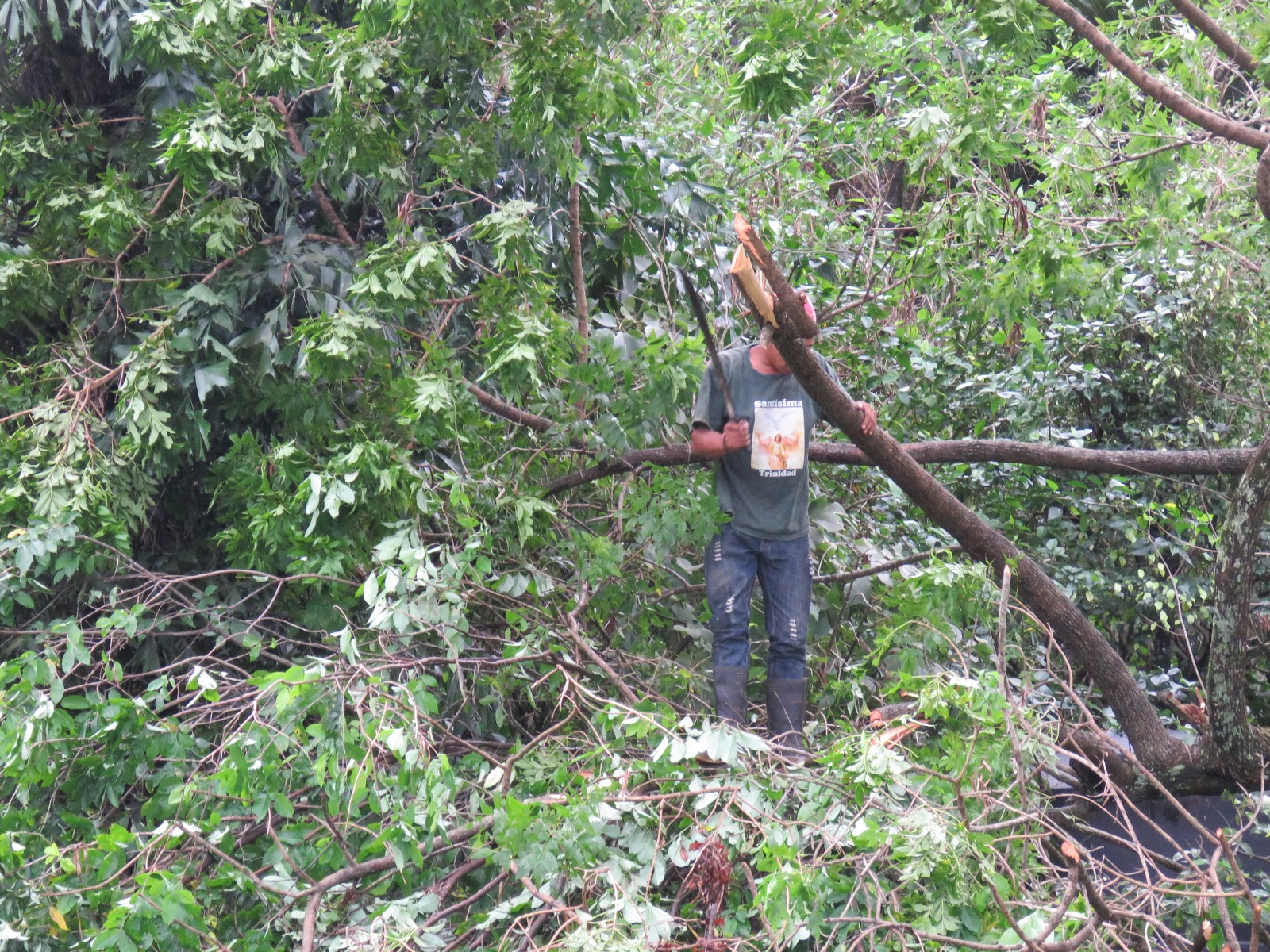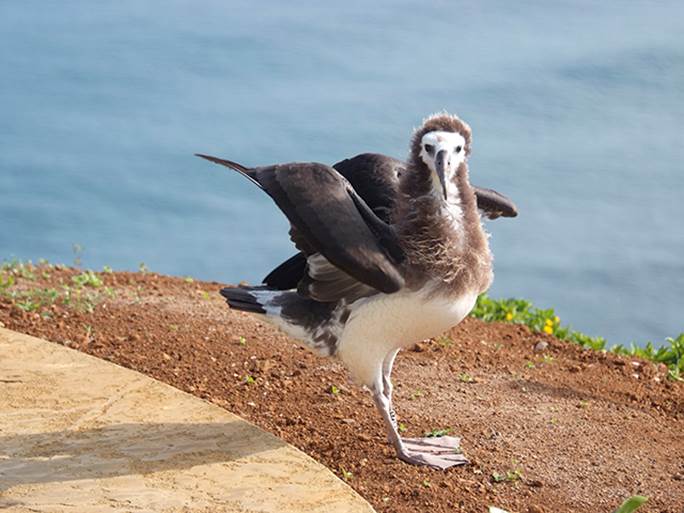 |
| This elephant seal on Steeple Jason Island didn’t care for our photo-taking antics. |
It was an early start to the day when we had to be dressed in our heavy gear to embark upon a 75 minute Zodiac boat cruise of Elsehul Island located on South Georgia Island. Initially, the plan had been to leave a little later in the morning, but the captain decided it was best to go out earlier rather than later with bad weather on the horizon.
 |
| About one in 1000 seal births results in this light color resulting from low melanin production. Although not albino, the offspring of these seals may also be the light color or not. |
Awakening at 5:15 am, we showered and dressed in our multiple layers to keep us warm in the potentially high winds and colder temperatures than we’d experienced in over five years. We had no trouble getting up and ready, heading to deck three lounge to wait for our designated color “blue” t0 be called to board the boats.
 |
| A male fur seal keeping watch. We were warned not to get too close to the males. They can readily become agitated and can attack. Their bite can be dangerous. |
One of our readers wrote asking how hard it is to board the somewhat wobbly Zodiac boats, especially in rough weather. As part of our safety procedures during an expedition cruise, one section consisted of getting on and off the ships and ensuring we don’t tip overboard on the fast bouncy rides if we’re in rough seas.
 |
| This Elephant Seal didn’t look so happy. |
Thick ropes are surrounding the perimeter of the Zodiac we can hang onto in rough seas. But, as shown in our photos, sitting on the outside edge of the boats doesn’t feel exceptionally stable. It would be awful to plunge into the ice-cold seas in this part of the world. Getting off and on has now become second nature, even with my injured knee.
 |
| Lounging fur seals, adults, and pups. |
In addition, we’ve continued to go through a series of decontamination procedures each time we board and disembark the 10-person boats. Keeping Antarctica free of germs and contamination from outside areas is vital to the preservation of wildlife and vegetation in this protected area.
 |
| Basking in the warmth of the sun. |
Prior to boarding the boats, while wearing our boots (provided by Ponant) we are required to walk through a disinfectant liquid that clears any bacteria or organisms we may have picked aboard the ship.
 |
| A watchful eye for the family… |
After our expedition, we not only walk through the liquid again, but we stop at a station where there are large pans of disinfectant and long-handled scrub brushes in order to clean the boots from any residual guano or vegetation.
 |
| King Penguins were standing by the shore at Steeple Jason Island. |
In addition to the above, yesterday afternoon, each deck was scheduled at a specific time to bring their parkas, boots, gloves, scarves, and hat to the third deck lounge to vacuum each item to remove any residual items that may have become attached to our outerwear.
 |
| An affectionate family interaction. |
We appreciate and respect the diligence with which the cruise line honors these actual eco and conservation laws as a part of the honor of being a visitor to this majestic place.
 |
| Four King Penguins were contemplating their next move. |
Over these past five days, since we’ve boarded the ship, we’ve become a part of a 10-person group of passengers with whom we hang out, meet for happy hour and dine each evening.
 |
| We observed a total of three of these rare light-colored fur seals. |
The instigators of these great group of people have been perpetrated by new friends and US citizens Marg and Steve with homes in Montana and Arizona. Marg’s bubbly and charming personality certainly designate her as the most competent of social directors.
 |
| Penguins were lining the shore. |
Our group consists of five couples; two from Australia and three from the US. It’s a perfect mix of varying ages (from 30’s to 70’s) and lifestyles, making the conversations and laughter flow with ease. On most cruises, we tend to single out English speaking people (duh, makes sense, right?) and as always, we’re having a great time with our new friends.
 |
| It was a pretty scene in Steeple Jason Island. |
Canada 29
 |
| King Penguins were hanging out on a hill. |
Most of the passengers from Canada, Luxembourg, and Switzerland speak French. Adding those citizens to the French group accounts for 110 passengers who speak French. This French ship starts all announcements in French but is accommodating in providing information shortly after that in English. It’s working out fine for those of us English-speaking passengers.
 |
| Tom noticed a “face” formation in these rocks. Do you see this too? |
I have to rush and wrap this up. In less than 40 minutes, we have to be dressed in the warm weather gear and ready to go for our next excursion in Stromness in South Georgia. Due to bad weather conditions, the actual “port of call” has been changed to a small historical town with plenty of wildlife. We’ll be back with more soon. Stay warm. Stay well.
 |
| Closeup of King Penguins. |
Photo from one year ago today, January 28, 2017:
 |
| Many carved statues were overlooking the Huon River in Tasmania. We stopped to read about each of them. For more photos, please click here. |






































































































































